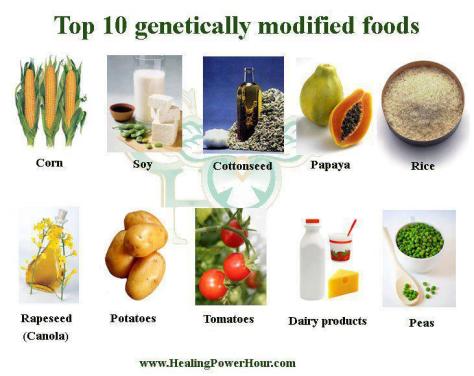This is going to be a touchy subject for some of you. But, that’s mostly because you have no clue what’s really been going on in the world. (No, I am not trying to insult you….)
Back some 30 years ago, folks began complaining about GMO- genetically modified organisms. Yet, they’ve begun to creep in the marketplace; actually, they are pretty much the established norms.

Soy and canola are among the most likely crops that we buy that have been genetically modified. (You know the backbone of the vegetarian and vegan diets. The diets chosen by a vital component of the anti-GMO crowd. Do they not know they are enjoying the benefits of GMO?) Not to mention corn or sugar beets.
Or, in my case, rainbow papaya, bred to be capable of resisting the virus that destroyed yields. (This variety comprises some 90% of our Hawaiian production.) I use the papaya not only in my ubiquitous fruit salads (with cottage cheese or sour cream), but for its papain enzyme that conditions the prime ribs that I prepare for Friday nights and holidays.
Now, I admit that Monsanto managed to antagonize a whole bunch of folks with its herbicide-resistant soybean some 25 years ago. (The goal was to sell a soybean resistance to glyophosphate [RoundUp], so it would survive the copious quantities of herbicide administered to the farms to eradicate weeds.) Since 2003, the GMO (glyophosphate-resistant) modified corn and soy seeds have dominated the market. There’s also BT corn, corn resistant to Bacillus thuringiensis (an insecticide), that lets farmers use about 1/3 less insecticide.
I think the real resistance to GMO products is that these products didn’t really seem to benefit us- the consumers.
Nevertheless, we’ve been manipulating crops for a long time. Our cucumbers no longer have a bitter compound (cucurbitacin) in the peel. We have a plethora of tomato and apple varieties that have likewise been manipulated.
Oh, let’s be real. Almost everything we eat and grow today has had DNA alterations- to increase the yields, the palatability, the appearance, and/or the shelf life of the product.
Notwithstanding the NAS (National Academy of Sciences) report that GMO products were generally safe, consumers are still leery. And, now that we have new tools (like CRISPR), we can readily identify which genes need “fixing”- to improve color, sweetness, hardiness. And, with the CRISPR only those genes will be altered. This provides a far more precise method to improve our crops.
That’s why the USDA (United States Department of Agriculture) have reduced the regulations involved when we alter the plant’s own DNA. (I am talking about cisgenic edits; a process by which genes are artificially transferred between organisms that are normally bred together. Transgenic edits involve gene transfers between closely related organisms.)
What’s going to happen when folks have completed their development of kale and mustard green (healthy greens- especially when compared to iceberg or romaine lettuce [of little nutrient value]) to be sweeter and less pungent? Or, when black raspberries are introduced- a wonderful berry long since lost to us due to viral infections years ago.
However, the real issue- one that must be addressed now- is that we are going to have to manipulate a slew of our crops to be able to grow at elevated temperatures and saline levels. After all, if we don’t modify our foods and crops, neither they nor we will survive the changes that climate change has wrought upon this world.
It’s time to recognize the reality of our world.








A post which I will need to read again and research some more. Food for thought
Glad that I lit a fuse. Let me know what you learn. I’m curious, too, Dr. A.
I’m not a fan of GMO and I don’t eat anything genetically modified!
I am fairly certain that you already have- and probably do routinely, Jojo. Because our foods can’t adapt quickly enough to climate change, at the very least.
Roy, wow. Thanks for waking me up. I totally take your point/theme. I will share.
Kebba Buckley Button recently posted..Healthy Happy Loving Life: Peace Poetry Day
It is something we are going to have to use if we plan to survive the change in this world, Kebba. Thanks for the visit and the comment.
Very interesting and educational when it comes to GMO.
Martha recently posted..No Heavy Whipping Cream
Thank you for your kind comment, Martha.
Anyone who eats processed foods (even things like commercial yogurt) may see, on the label, that the product was made with GMO’s. So you are right; it’s here, whether we pay attention or not. I never thought about it from the aspect of what we will need to keep our food sources ahead of climate change. People will need to realize the reality of climate change; there are still too many people shrugging it off after what has been happening the past several years.
Alana recently posted..Finally A Sunset #SkywatchFriday
Great addition to the conversation, Alana! Thanks!